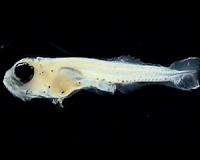| . |  |
. |
Tel Aviv, Israel (UPI) Jun 18, 2010 Israel may be celebrating the discovery of giant offshore gas fields that are expected to transform its economy, but its hopes of overcoming its acute water problems have been set back by Turkey, its erstwhile ally. The Islamist government in Ankara has shelved plans to sell the Jewish state 1.75 billion cubic feet of water a year for 20 years from the Mavganat River in Anatolia, part of its wider strategy of restoring the regional dominance it had a century ago. The Turkish decision to suspend the project was in retaliation for the May 31 killing by the Israeli navy of nine Turks aboard a Turkish-flagged ship carrying humanitarian to the Israeli-blockaded Gaza Strip. Turkish Energy and Natural Resources Minister Taner Yildiz says Ankara will not develop any joint projects with Israel until it "apologizes and expresses its regret" for the attack in international waters in the eastern Mediterranean. The May 31 attack was the latest in a series of incidents over the last few years that have soured relations between the two states and taken them to the brink of severing diplomatic relations. Ankara has also halted a plan to supply Israel with natural gas from Russia via Turkey through an underwater gas pipeline across the eastern Mediterranean, part of the Blue Stream 2 project. Relations have been deteriorating steadily since Israel invaded the Hamas-controlled Gaza Strip in December 2008 and killed some 1,200 Palestinians, mainly civilians. Ankara bitterly denounced that action. Now that the Jewish state has its own gas fields, which industry experts say could contain up to 25 trillion cubic feet of gas, the loss of the gas pipeline is a minor irritant in economic terms. But the block on the water project is a greater setback for a country whose water resources, partly in the occupied West Bank, are shrinking. Both state-sponsored programs have been in abeyance for several years. The Mavganat plan, first mooted 20 years ago, was to ship water from Turkey in converted oil supertankers across the eastern Mediterranean. The river flows into the Mediterranean near the port of Antalya on Turkey's southern border where a $150 million water export hub was built in preparation for the project. The Mavganat is capable of producing 6.3 billion cubic feet of water a year for export across the region, including Cyprus, Syria, Jordan and even the Persian Gulf states. Ankara was ready to provide the water to cement its 1996 military cooperation pact with Israel, a strategic alliance that drew together the region's two non-Arab military powers. Ankara was also prepared to sell this valuable resource to other states, even as far afield as Libya and the Persian Gulf, to promote Turkey as the regional power as it had been until the Ottoman Empire was carved up by the British and French after World War I. However, back in the early 1990s, pipelines to carry the water around the region were rejected by the governments concerned. They were reluctant to put themselves in a position where Ankara would have control over such a critical resource. In June 2000, Israel and Turkey signed a preliminary agreement on the Mavganat project. But little more was heard of it until June 2006, when the Israeli government said it was considering canceling the project, citing high costs of around $1.34 billion over the 20-year period. The feeling at the time was that desalination plants were more feasible to solve Israel's perennial water problems. It preferred a water pipeline from Turkey, but that would have to pass through arch-enemy Syria, and probably Lebanon as well, which made it highly insecure. Finally, on Aug. 6, 2006, then Israeli Prime Minister Ariel Sharon signed an agreement on the water project in Jerusalem with Turkey's then-energy minister, Zeki Cakan, and agreed to set up a joint committee to deal with transportation. But the project again slipped into abeyance because both sides agreed that high oil prices at the time made the cost of transporting the water in giant tankers prohibitive. Turkish privatization of the water treatment facilities at the mouth of the Mavganat also pushed up the cost of the water for Israel. Now the project may never get off the ground.
Share This Article With Planet Earth
Related Links Water News - Science, Technology and Politics
 Robot Submarine Patrols Lake Michigan For Climate-Change Study
Robot Submarine Patrols Lake Michigan For Climate-Change StudyWest Lafayette INw (SPX) Jun 17, 2010 Researchers at Purdue University are using a robotic submarine and other specialized tools in Lake Michigan to gather biological and environmental data showing how young fish vital to the ecosystem may cope with future climate change. The researchers are correlating larval fish growth with various factors, including water temperatures near the lakeshore, where wind patterns might be altere ... read more |
|
| The content herein, unless otherwise known to be public domain, are Copyright 1995-2010 - SpaceDaily. AFP and UPI Wire Stories are copyright Agence France-Presse and United Press International. ESA Portal Reports are copyright European Space Agency. All NASA sourced material is public domain. Additional copyrights may apply in whole or part to other bona fide parties. Advertising does not imply endorsement,agreement or approval of any opinions, statements or information provided by SpaceDaily on any Web page published or hosted by SpaceDaily. Privacy Statement |